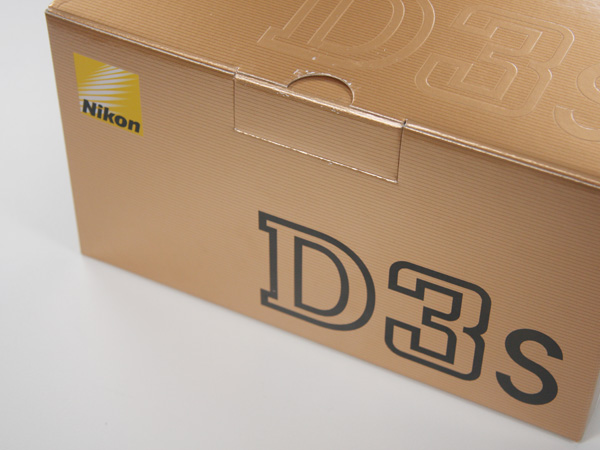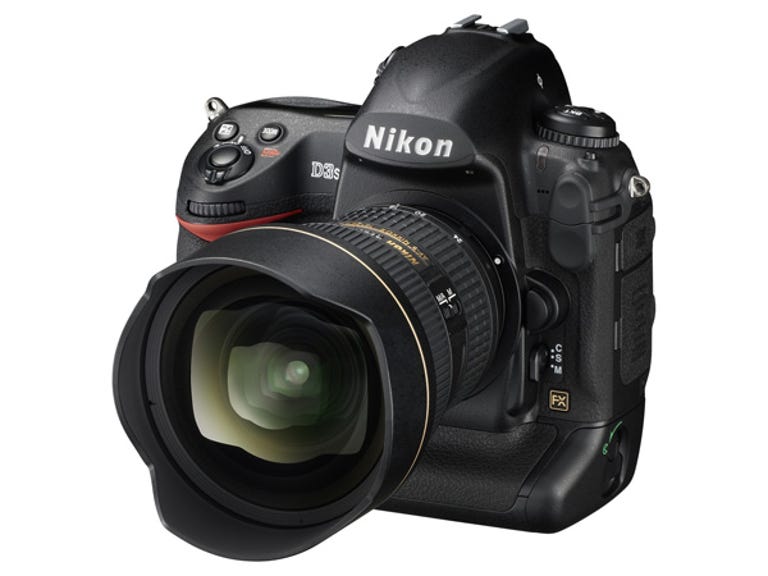 Why You Can Trust CNET
Why You Can Trust CNET Nikon D3S review: Nikon D3S
True night vision is a step closer with the Nikon D3S, a stunning professional dSLR on all accounts from still images to video.
Editor's note: the D3S is available through Nikon's professional retail channel, with a price on application. That said, we have seen it priced at AU$6995 at a number of retailers.
The Good
The Bad
The Bottom Line
The D3S is a worthy successor to the D3, refining rather than completely overhauling the successful formula. There's been enough written on the D3S to fill a small house with information, so rather than re-hashing every specification, we'll highlight a few and talk about some more practical elements of the camera throughout this review.
Design and features
There are few surprises in the looks of the D3S — it's almost identical to the D3 which it now supersedes. It feels incredibly well made, and for the price you would expect this camera to work like a tank. The 3-inch 920,000-dot screen remains unchanged from its predecessor's, and still does the job well. It's a smidgen lighter than the D3 too, not that 60-odd grams makes that much difference in the grand scheme of things — especially when you're toting around the new 70-200mm VR II lens attached to the camera.
There are also three different crop modes which are all displayed in the viewfinder: 1.2x, 5:4 and DX, which reduce the file size but allow the photographer to achieve different effects and also to use different, non-FX lenses.
What's in the box?

Click the image above to find out what an unboxed D3S looks like. (Credit: Alexandra Savvides/CNET Australia)
Improvements
Some of the most interesting improvements to photographers are perhaps not the most highlighted in the specifications. It's the little things that you'll notice the most, like the soft-touch AF-On button and the new, dedicated live view button. It's no longer on the dial, but instead located near the LCD screen, which is actually pretty clever for two main reasons: it's more convenient to press the button rather than move the dial for easy access into live view; and secondly, it means that you can use quiet shutter and other shooting options when live view is active.
The rear of the D3S, showing the live view button and similar layout to the D3. (Credit: Nikon)
Inside, the sensor has been completely redesigned, so it isn't the same as that found on the D3. The 12.87-megapixel CMOS sensor won't match something like the Canon EOS 1D Mark IV's 17-megapixel sensor, but then again it's not really meant to — if you want that sort of resolution for studio work you'll be looking at the D3X anyway.
The inclusion of D-Movie on the D3S came as no real surprise considering how it has encroached upon more entry-level models like the D5000, and the prosumer DX format D300S. At 720p and 24 frames per second the implementation is essentially the same as featured on the aforementioned cameras. There's an internal stereo microphone plus a 3.5mm jack for attaching an external microphone, and if you fancy capturing a moment from video as a JPEG, that's a possibility as well (though it will only be 720x540 pixels). In-camera editing of movies is also available, though it's not going to replace a dedicated video editing package any time soon. Still, we appreciate its inclusion.
In action
The D3S is an incredible performer — it meets the same stats as the now-retired D3 but it feels just a little more nimble on its feet. Its burst rating is 9 frames per second and it achieves this with ease in practice, and thanks to the increased buffer it now takes even longer for this camera to slow its machine-gun-like response. Nikon claims the battery life can now withstand 4200 frames on a single charge.
Click the image above to sample some more images and video from the D3S. (Credit: Alexandra Savvides/CNET Australia)
The white balance seems to produce slightly warmer tones on automatic settings than the D3 does, which makes for a more pleasing colour balance from JPEGs straight from the camera.
The low light capabilities of this camera are a great improvement over the D3. Though the maximum ISO is a rather jaw-dropping 102,400, at this level it's incredibly noisy and there is a loss of detail.
A 100 per cent crop of an image taken at ISO 102,400 on the Nikon D3S. While it seems noisy, we've seen worse results on entry-level digital SLRs and some compact cameras at ISO 3200. (Credit: Alexandra Savvides/CNET Australia)
However, it's undeniable that the D3S breaks new ground in non-flash photography thanks to its strong images at high sensitivities under ISO 102,400. Anecdotally, the D3S seemed to keep colours accurate as the sensitivity level increased when compared to D700 and D300S images. At low and native sensitivities, the D3S produces punchy, vibrant colours that are very accurate.
The shots that we took as dusk descended over the cityscape were simply unbelievable — this camera delivered results that could be mistaken for daytime shots. In conjunction with the 70-200mm VR II lens, the D3S is a formidable picture-taking machine, and most definitely makes photographing low light situations incredibly easy (just mind the hefty lens).
The image below shows an example of how the D3S really can see in the dark; note the sharpness of the image in reduced and full magnifications, and the crisp focus. This image was taken with the 70-200mm lens at 1/30, f/4.5, ISO 12,800, handheld.
(Credit: Alexandra Savvides/CNET Australia)
Speaking of the 70-200mm lens, it's very well corrected for chromatic aberrations as you can see in the image below; a 100 per cent crop of a night image.
(Credit: Alexandra Savvides/CNET Australia)
Suffice to say, it will be incredibly difficult to go back to shooting with "just a normal camera" after having used the D3S — certainly, the freedom it affords in tripod-less shooting is very liberating. Hopefully it won't take too long for it to trickle down to lower-level cameras in the future.
The D3S as an FX camera comes with a two-year warranty from Nikon Australia, the second year is activated on registration with Nikon Professional Services.
Conclusion
For absolutely anyone who values high shutter speeds, greater depth of field or just amazing performance in low light situations, the D3S is simply amazing. Professional photographers particularly in action and sports fields will relish this camera. Incremental updates, like D-Movie, seem to be inevitable additions to the formula, and we look forward to some of the features on this camera trickling down to consumer SLRs in the future.


